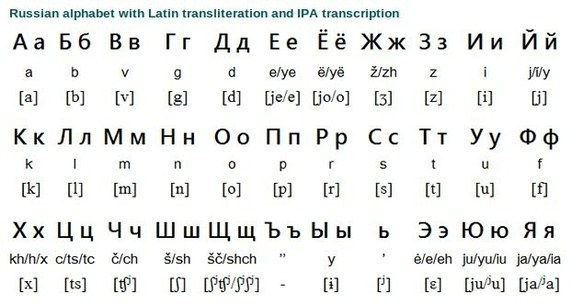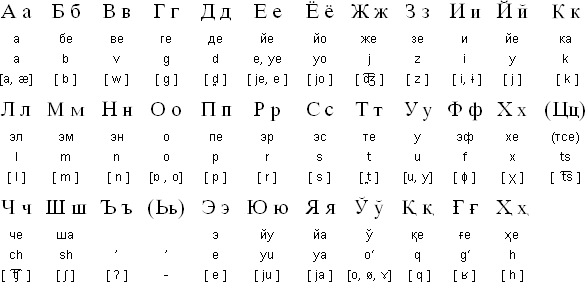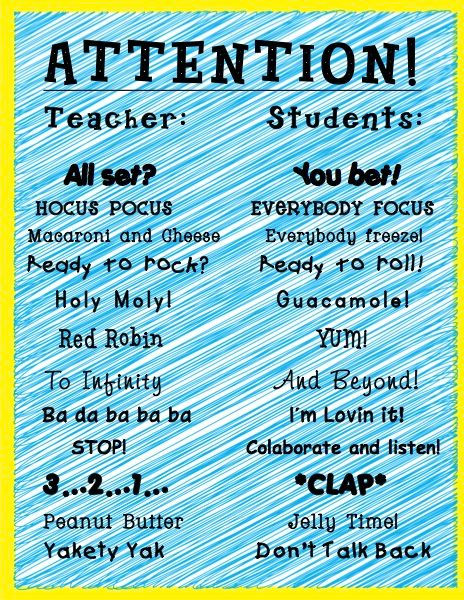ENGLISH LANGUAGE LEARNERS
- by Jyldyz Byler
- Oct 20, 2016
- 9 min read
Englsh Language learners (ELLs) are a diverse group of students with many different needs. Students who speak the same language or with similar levels of language proficiency may need different kinds of support to master learning in the classroom.
Identifying communication, social and cultural barriers ELLs.
Around the world in many International schools (also in Western countries in local schools) we may have students who have unique academic, social-emotional needs based on their prior experiences.
As International school we have a big diversity in the classroom. Some of the student would be considered as ELLs and I would like to emphasize two of them.
One of them Russian ELL students. Working in my school in Kazakhstan we have many Russian speaking ELL students.
Russian is a part of the Indo-European language family. It is closely related to other Slav languages such as Ukrainian, Polish, and Czech. Russian is spoken as a mother tongue in Russia and the former countries of the USSR.
English and Russian are different in many aspects, especially the grammar structure. English has a pretty fixed word order that is expressed through the addition and movement of words within limited boundaries and Russian language conveys meaning largely through changes in the composition of words (by adding prefixes and suffixes).
Alphabet. Russian language use the Cyrillic alphabet and some letters from Cyrillic alphabet are similar to letters in the Latin alphabet. Because of these similarities Russian ELL students pretty often get confused. Here some examples of similarities:

As you see: English Russian
Lowercase “m” is “t”
“B” "v"
Lowercase “n” "p"
“p” "r"
“y” "u"
Russian ELL students who learning English at the school and Russian at home very often get confused in writing with those similar letters on two languages. These letters spells same but pronounce differently. Also, sounds like the /Ө/ and /ꝺ/ don’t exist in Russian so, words like thin, then etc. are quiet difficult to pronounce for Russian ELL students.
Grammar. Russian and English languages pass meaning through the verb system in different ways. In Russian sentences build by adding affixes to the verb stem and in English sentences build by using auxiliary verbs.
These differences brings problems in many areas for ELL learners. For example, Russian ELL students often skip the auxiliary verbs in questions or negatives:
“How you do that?”
“ I no have it”
“Why she crying?”
“You like me?”
Also, Russian ELL students leads to errors such as: “She good teacher”.
At last, no articles in Russian language and it causes many problems for ELL students. (In this case I would like to add myself because I always forget to put article). Other things is, in Russian language nouns are one of three genders and this aspect cause problems such as:
“Have you seen my book?”
“I put her on the table.”
Communication, social and cultural barriers. Russian ELL students are very different from students in the USA. They have different mentality, behavior, and different learning ways. For example, one of the Russian ELL use to guess answer by looking at the picture. In math it use to help, because tasks in each step was providing picture instruction too, so if he couldn’t understand text instruction pictures were helping him to understand what he supposed to do but this way didn’t help him in literacy because teachers would ask questions according what text said and by just looking at pictures he had no clue what teacher was asking about or talking about. Other different is students in the USA learn to ask questions and express their feelings, Russian ELL students are opposite to that. In Russian schools if students didn’t understand something from what teacher explained they afraid to ask, because other students might muck him. When they came from local school to International school they bring that mindset with them. One of our Russian student use to sit and don’t do anything until teacher would return to him and check what he is doing. Most of the time he wasted his time because he was afraid to ask or tell that he didn’t understand. He thought if he would do that his classmate would think that he is dummy and they wouldn’t play with him.
Russian ELL students’ parents not much active in students school life but they value and respect teachers. The reason why they not interact much in students school life is Russian schools don’t have such as organizations like PTA in the USA. Over active parents involvement in school life not common things in Russian schools but if you ask them to help in afterschool activities or in some other things they always welcome to help and support. The parent who doesn’t speak English we communicate through our local staff who speak Russian other way there would be big miscommunication. For example, few weeks ago our math teacher ask one of Russian parent write a note if her child struggling with homework or if he didn’t do it. So, she start writing a note every day, no matter if student did homework or didn’t. Then our teacher explain her that a not she has to write only if student didn’t do homework and if there some reason for that. She stop writing a note at all.
Other ELL students that we have in our school are from Uzbekistan. Uzbek language is part of the Turkish language family. Until 1940 Uzbekistan alphabet use to be in Arabic but later on it changed to Cyrillic alphabet. In present days Uzbek alphabet is Cyrillic with few exceptions. In their alphabet few of the sounds represented in Latin letters. Below are those sounds which are not found in English and which require some explanation.
Uzbek alphabet in Cyrillic

Uzbek alphabet in Latin

Grammar in Uzbek language is very similar to Russian grammar. Uzbek language sentences build by adding affixes and suffixes to the verb stem. Most of the time they do very similar mistakes in English as Russian ELL students do but in Uzbek language words order in the sentences are different. Below examples of Uzbek grammar:
. Word order is Subject-Object-Verb:
Men kitob yozdim (I book wrote): I wrote a book.
. Adjectives come before nouns:
U yosh bola (He young child): He is a young child.
. Adverbs come before verbs:
U tez gapirdi (He quickly spoke): He spoke quickly.
Endings to add to the verbstem to speak in the Past Tense:
-dim I Keldim I came.
-ding you (singular/informal) Kelding You came.
-di he/she/it Keldi He came.
-dik we Keldik We came.
-dingiz you (plural/formal) Keldingiz You came.
-dilar they Keldilar They came.
. To make a verb into a command:
Kel! Come! (no suffix on verbstem)
Keling! Come! (more polite)
Kelinglar! Come! (even more polite)
. To make a verb negative:
Kel- to come Keldim I came.
Kelma- to not come Kelmadim I didn’t come.
Endings to add to express possession:
-im my kitobim my book
-ing your (singular/informal) kitobing your book
-i his/her/its kitobi his/her book
-imiz our kitobimiz our book
-ingiz your (plural/formal) kitobingiz your book
-ilar their kitobilar their book
Cultural, social-emotional differences. Uzbekistan considered as a Muslim country and this aspect sometime cause problems in the school. For example the parents were very concerned about school lunch. They wanted avoid pork products. Also, Uzbek ELL student parents are not that much open as USA parents. They don’t interact much with other parents. In our school most of the time they reject invitations for parties or some celebrations. For example, last year one of the parents didn’t give permission for science field trip because they thought it is not save. Also, he never joined birthday parties because the parents thought it is not necessary for their child. Of course, all these factors affected students learning. His English learning were developing very slowly because he used English only when he was at school and most of the time only with a teacher.
As an English as ELL teacher, you must learn to constantly adapt to your students' needs.
Many times, this means dealing with a variety of problems in the classroom. By doing this topic I learned a lot about ELL students. By creating this topic I am not just preparing my submission, also I am collecting important information that I can use in the classroom.
There for, I would like to add my research that I found about some general problems that ELL students might face in the classroom and suggestions how to solve those problems.
Information taken from the website: https://owlcation.com/academia/Teaching-ESL-10-Common-
Classroom-Problems-and-Solutions

When Students become dependent on the teacher.
Many times, students will automatically look to the teacher for correct answers instead of trying
themselves. If the teacher obliges them with the answer each time, it can become a detrimental problem. Instead, focus on giving positive encouragement. This will help to make students more comfortable and more willing to answer (even if incorrectly).
Persistent use of first-language
When teaching English as a foreign language, this is possibly the most common problem. As an ESL teacher, it's important to encourage students to use English, and only English. However, if students begin conversing in their first language, move closer. Ask them direct questions like "do you have a question?" Another idea is to establish a set of class rules and develop a penalty system for when they use their first language. For example: if someone is caught using their first-language three times, have them recite a poem in front of the class (in English). Remember, for the 1-2 hours they are in English class, it must be English only.
Student is defiant, rowdy, or distracting of others.
This will happen, no matter what, in every classroom. If the entire class is acting up, it may be the fault of the teacher, i.e. boring material or poor classroom management. If it is one particular student, you should react swiftly to show dominance. In order to resolve the issue, an ESL teacher must be strict and institute discipline if needed. If it continues to happen, further disciplinary action through the school's director could be pursued.
Personalities clash.
Not everyone in an ESL classroom will become the best of friends. If drama arises between certain students, the easiest solution is to separate them from one another. If the tension persists, switching a student to another classroom may be your only option.
Students unclear what to do, or do the wrong thing.
This happens far too often when teaching English as a foreign language. The fact is, it's often the fault of the teacher. If your instructions to an assignment yield looks of confusion and soft whispers among students, don't worry: there is a solution. In order to avoid this problem, it's important to make sure your instruction are clear. Use gestures, mime, and short concise sentences. Speak clear and strong. Most importantly, use models and examples of the activity. You can use pictures, miming, gestures etc. to model the entire activity exactly how you want the students to do it.

Students are bored, inattentive, or unmotivated.
Many times, it is the teacher's fault that class is boring. Fortunately, with proper planning, this problem can be solved. Choose a juicy theme to the lesson; one that the students can relate to and one you know they will enjoy. This will automatically give them some motivation and interest. Get to know your pupils and identify their interests and needs, then design your course accordingly.
Strong student dominance
As an ESL teacher, you will encounter learners with different capabilities and language skills. While it is good to have some students who excel in the classroom, it is important that they don't take away from others. If certain students begin to constantly "steal the show," take care. Focus on calling on weaker students in the class to answer questions. Encourage, but gently deflect some answers from the strong students and give production time to other not-so-strong members of the class.
Students are unprepared.
The last thing you want as an ESL teacher is for learners to drop out simply because they felt lost and/or unprepared. Concentrate on a more shared learning experience. Make sure students are all on the same page before moving onto a new topic by concept checking multiple times, and encouraging individual participation.
Tardiness
Even I have a hard time arriving places on time. But the truth is, tardiness is not only rude, it can be distracting and disruptive to other students. If tardiness becomes a problem for members of your class, make sure they are disciplined. Set rules about tardiness and penalties for breaking them.

The Goal of Teaching
Staying awake and interested in class can be difficult. But what's even more difficult is being responsible
for keeping students awake and interested. This is the job of an ESL teacher first and foremost. In order to be a great ESL teacher, one must not only teach, but inspire and empower. The goal is to excite the students about learning, speaking, reading, writing, and comprehending English. Keep the advice in this article as a tool to be used often, and you will be one step closer to that goal.
Reference
Language differences: English - Russian. (n.d.). Retrieved October 20, 2016, from http://esl.fis.edu/grammar/langdiff/russian.htm
Introduction to the Uzbek Language - OXUS. (n.d.). Retrieved October 20, 2016, from http://www.oxuscom.com/250words.htm
Teaching ESL: 10 Common Problems in the Classroom. (n.d.). Retrieved October 20, 2016, from https://owlcation.com/academia/Teaching-ESL-10-Common-Classroom-Problems-and-Solutions
English Language Learners - YouTube. (n.d.). Retrieved October 20, 2016, from http://www.youtube.com/watch?v=s2ap4Q5uxGE
Tips for Assessing ELL students - YouTube. (n.d.). Retrieved October 20, 2016, from http://www.youtube.com/watch?v=ILTwEJ8V8d4




Comments